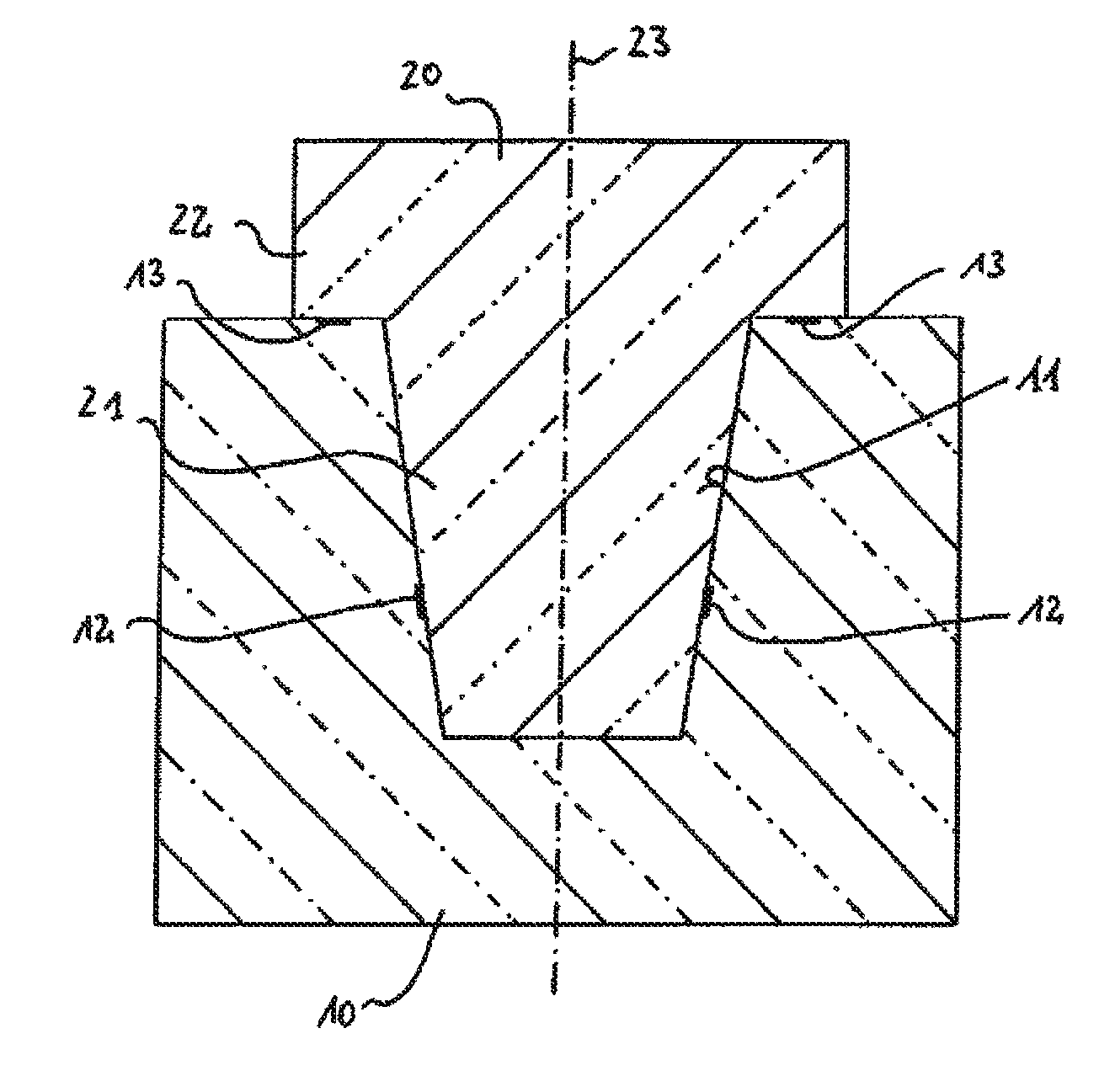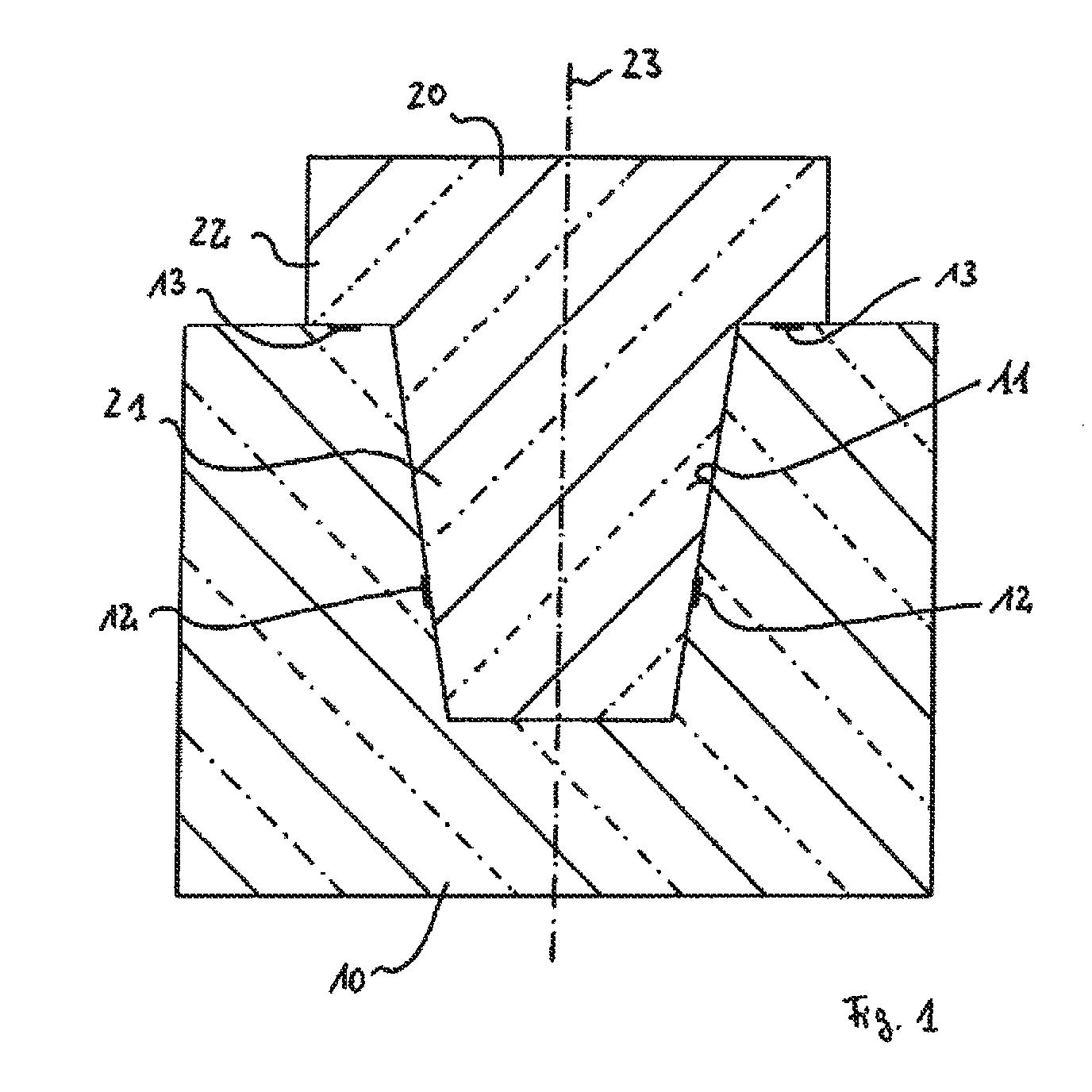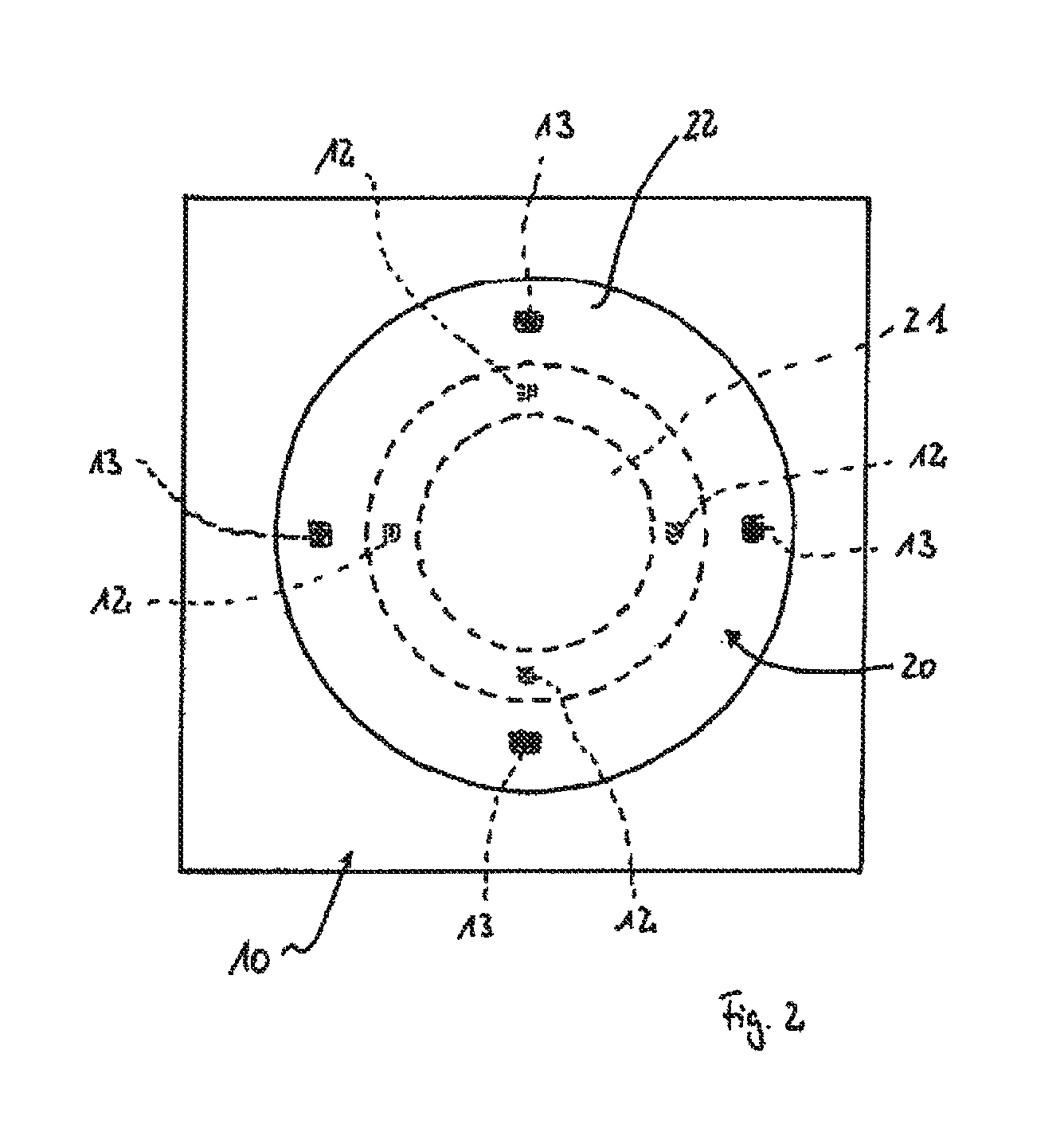Method and measuring system for determining deformations of a geometric body with the aid of force measuring sensors or deformation measuring sensors
a technology of force measurement and geometric body, applied in the direction of force measurement by elastic gauge deformation, measurement/indication equipment, instruments, etc., can solve the problems of defective machining of workpieces, loss of quality, and machining tool trajectories, and achieve precise force measurement and deformation detection.
- Summary
- Abstract
- Description
- Claims
- Application Information
AI Technical Summary
Benefits of technology
Problems solved by technology
Method used
Image
Examples
Embodiment Construction
[0030]FIG. 1 schematically shows a sectional view through a configuration of two bodies 10, 20, one form-fitted inside the other. The body 10 includes a conical holder 11 integrated in the body, in which a corresponding, conical connection piece 21 of the body 20 is inserted. The body 20 also includes a collar 22, which extends laterally beyond the connection piece 21. As is apparent, in particular, in FIG. 2, the body 20 is rotationally symmetrical in design about its longitudinal axis 23 with a circumferential, projecting collar 22.
[0031]First, force sensors 12 are arranged in the interior of the holder 11 at the same level perpendicular to the longitudinal axis 23 of the body 20, in such a way that they are able to register forces transmitted from the connection piece 21 to the surface of the holder 11, which act perpendicular to the boundary surfaces. As is apparent in FIG. 2, a total of four such first force sensors 12 are arranged in this exemplary embodiment, in each case at ...
PUM
| Property | Measurement | Unit |
|---|---|---|
| forces | aaaaa | aaaaa |
| torques | aaaaa | aaaaa |
| force measuring | aaaaa | aaaaa |
Abstract
Description
Claims
Application Information
 Login to View More
Login to View More - R&D
- Intellectual Property
- Life Sciences
- Materials
- Tech Scout
- Unparalleled Data Quality
- Higher Quality Content
- 60% Fewer Hallucinations
Browse by: Latest US Patents, China's latest patents, Technical Efficacy Thesaurus, Application Domain, Technology Topic, Popular Technical Reports.
© 2025 PatSnap. All rights reserved.Legal|Privacy policy|Modern Slavery Act Transparency Statement|Sitemap|About US| Contact US: help@patsnap.com



